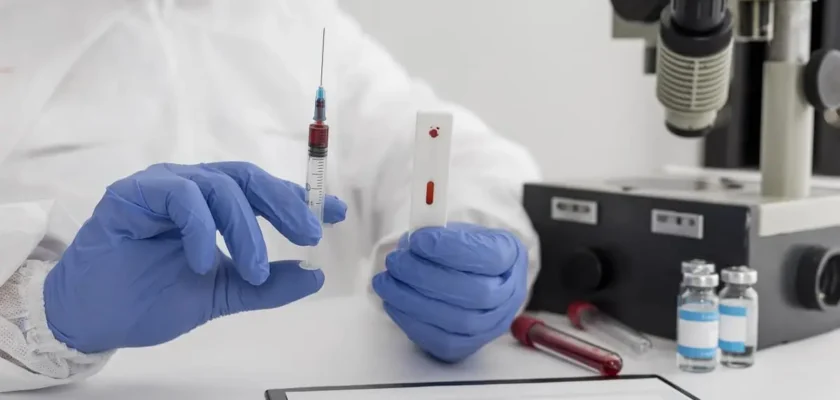Incident investigations play a pivotal role in mitigating risks, improving operational processes, and nurturing a culture of safety and accountability within organizations. In this blog, we’ll delve deeply into the importance, benefits, legal considerations, and implementation strategies surrounding drug testing in the workplace.
Utah’s unique business landscape presents specific challenges and opportunities in ensuring workplace safety, and we aim to provide valuable insights for employers navigating this terrain.
Understanding the Need for Onsite Drug Testing
In Utah, as in many other states, maintaining workplace safety is a paramount concern for employers. Shockingly, data from the National Survey on Drug Use and Health (NSDUH) reveals that approximately 9.7% of Utahns aged 12 or older reported using illicit drugs in the past month.
This statistic underscores the critical importance of implementing robust drug testing programs to mitigate the risks associated with substance abuse in the workplace.
Benefits of Onsite Drug Testing
The benefits of onsite drug testing for employers and employees alike cannot be overstated. Firstly, onsite testing provides immediate results, enabling swift action if necessary. Moreover, it eliminates the need for employees to travel to offsite facilities, saving time and increasing convenience.
Research has consistently shown that drug testing programs lead to a significant reduction in workplace accidents and injuries, ultimately saving companies money in the long run by reducing absenteeism, worker’s compensation claims, and legal liabilities.
While drug testing is an essential tool for maintaining workplace safety, it’s crucial to navigate legal and ethical considerations carefully. In Utah, employers must adhere to both state and federal laws governing drug testing practices.
This includes obtaining informed consent from employees, ensuring the confidentiality of results, and providing appropriate support and intervention for individuals struggling with substance abuse issues.
Additionally, employers must strike a delicate balance between promoting safety and respecting employees’ privacy rights, particularly in cases where drug testing may be perceived as intrusive.
Implementing Effective Drug Testing Programs
To maximize the effectiveness of drug testing programs, employers should consider several key factors. Firstly, clear communication is essential to ensure that employees understand the purpose, procedures, and implications of drug testing.
Employers should establish a comprehensive drug-free workplace policy that outlines expectations and consequences clearly. Regular training for supervisors and employees can help reinforce the importance of workplace safety and the role of drug testing in maintaining it.
Additionally, employers should consider offering support services such as employee assistance programs (EAPs) to help individuals struggling with substance abuse seek treatment and support.
Read More – Black Viagra 200mg: The Best Solution for Erectile Dysfunction
Elements of Effective Incident Investigations
Conducting meaningful incident investigations involves several key components:
- Timely Response: Promptly initiating investigations allows for the preservation of evidence and minimizes the potential impact of the incident.
- Thorough Documentation: Detailed documentation of the incident, including witness statements, relevant data, and observations, is crucial for comprehensive analysis.
- Root Cause Analysis: Going beyond surface-level factors to ascertain the fundamental causes of the incident enables organizations to address underlying issues.
- Cross-Functional Collaboration: Involving stakeholders from diverse departments and expertise areas enriches the investigation process and fosters a holistic understanding of the incident.
Leveraging Insights for Improvement
The insights gained from incident investigations can be instrumental in driving positive change within an organization:
- Process Optimization: Identifying weaknesses or bottlenecks through incident investigations empowers organizations to refine processes and enhance operational efficiency.
- Training and Development: Tailoring training programs based on the lessons learned from incidents equips employees with the knowledge and skills to prevent similar occurrences.
- Policy Refinement: Incident investigations inform the revision and reinforcement of organizational policies and procedures to bolster safety and risk management.
Embracing a Culture of Safety
Beyond the logistics of drug testing implementation, fostering a culture of safety is crucial for long-term success. Employers should encourage open communication and empower employees to raise safety concerns without fear of reprisal.
Recognizing and rewarding safe behaviors can further reinforce a positive safety culture within the organization. By prioritizing safety and well-being, employers can create a work environment where employees feel valued, supported, and motivated to perform their best.
Conclusion:
In conclusion, onsite drug testing plays a vital role in enhancing workplace safety in Utah and beyond. Regular and post-incident drug testing not only aids in identifying factors that could contribute to workplace accidents but also reinforces a culture of responsibility and health.
For organizations looking to implement or refine their drug testing procedures, it is crucial to understand Utah’s legal requirements and to communicate policies transparently with all employees, ensuring they understand the role such measures play in maintaining a safe and productive work environment.

